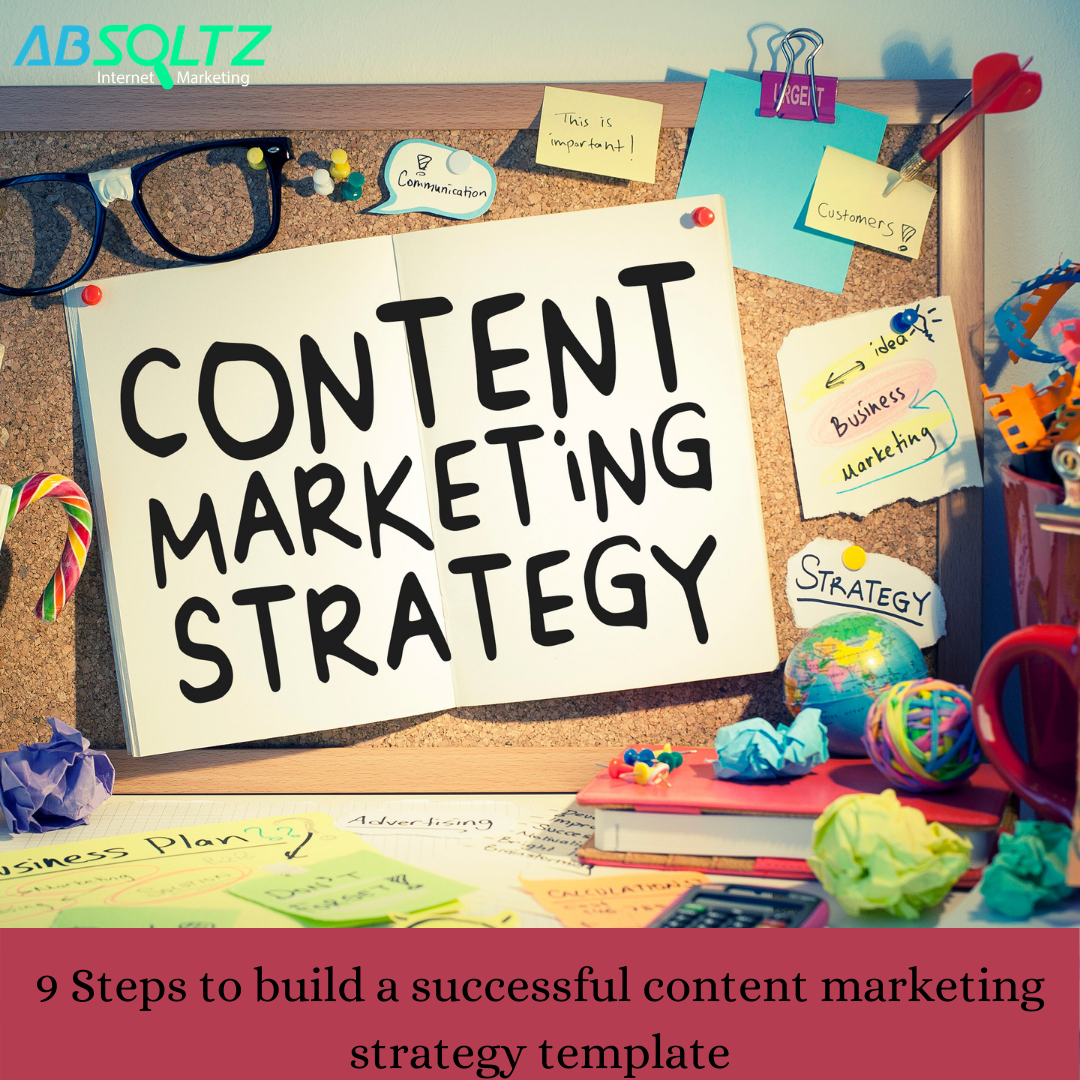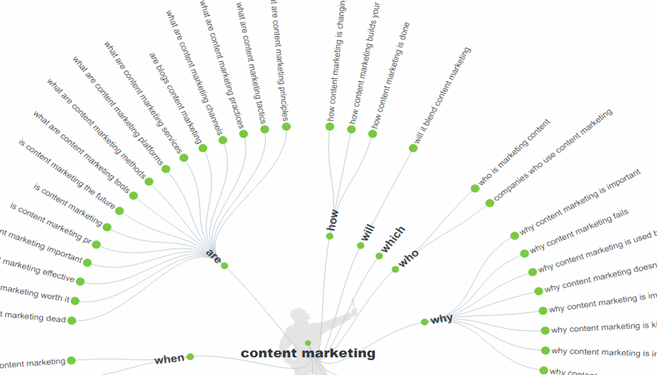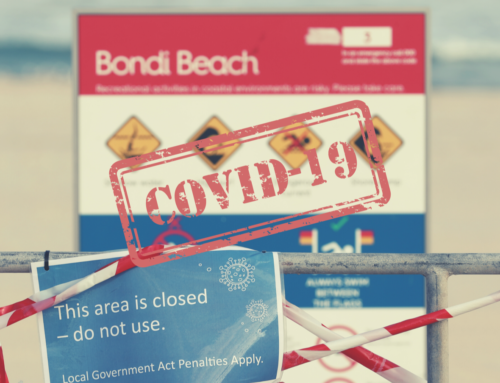
ontent marketing plays a very important role in growing businesses, endorsing products, building brand awareness and more. However, it is nothing without a well-defined strategy. You can have the most appealing, provocative piece of content out there, but it’s nothing if it can’t be found by the right people.
Content helps your community and your audience relate to you – the more helpful and relatable you are, the more people want to begin a relationship with you. The more you constantly put out great, useful content, the more people learn that you’re someone they can rely on when they have questions.
People buy from people they trust!
Do I Really Need a Content Strategy?
Yes! You need a strategy. The aim of a content strategy should be to help your business put together an audience for your products and/or services. The point of your content is to be seen, read, understand, heard, and predominantly shared. Without a way and a vision for how the content will drive results, marketers are left with scattershot content which might drive traffic, but it doesn’t speak to the audience in a way that’s momentous.
As there are no defined “rules” for structuring a content marketing strategy, it’s important to include some key elements. These tips will help you plan a killer content marketing plan that will attract readers and drive leads.
Set Goals and Establish KPIs-
A good initial point for your content strategy plan is to set out a content marketing KPI.
A KPI statement outlines:
- Your target audience
- The content you’ll use to reach them
- The benefit they’ll get
Typical goals include:
- Improving revenue as a result of your content marketing strategy
- Making more sales and receiving more high quality leads, which will help you meet your ROI goals.
- Getting more traffic to your site to increase the possibilities for meeting your other goals.
- Improving the insight of your business, to gain influence & authority,
- SEO success
- Reduced marketing costs
- Social media engagement, which can help with both traffic and authority.
The KPIs will help you to know & recognize your accomplished goals by providing milestones which you can check.
Understand Your Audience (Buyer Persona, Research)
Every piece of content you develop should be created with someone in mind. Consumers are more prone to make a purchase with a brand they can recognize with, and that begins and ends with that brand showing an understanding of their audience.
Web analytics, social media analytics and email subscriber analytics will give you the data you need on your audience’s:
- Age
- Gender
- Education
- Income
Identifying your audience also goes deeper than that. What does your audience want? What problems are they facing? How can your product/ service solve those troubles?
Don’t just suspect. Investigate your current audience and see who’s already engaged with your brand. You can even set up easy online surveys to send to your current audience, and make audience profiles based on the results. Your audience won’t fit in a solitary category; however, research can help you develop a main “buyer persona” that fits the profiles of much of your audience, as well as several secondary personas.
Keyword Research
Now it’s time to place yourself in their shoes. What are they searching for when they need your product or service? Assemble a list of basic keywords surrounding your brand, as well as any variations (For example- ‘Sydney bookkeepers’ and ‘Sydney bookkeeping,’) You know your niche well, so identify from all possible terms used for your product/service. Once you have these keywords, add in them into your content. Here are some benefits of including keywords in your content.
- Integrating keywords into blogs and other content is good for SEO and creating organic traffic.
- It allows your audience to figure out swiftly whether they’ve found the content they need before moving on.
- It puts your brand as an authority in your field.
Figure Out The Best Content Channel
Next, you need to ask yourself, what kind of content will my audience be interested in? What are they looking for? If your audience is more prone to read a blog post, would you waste time creating a video? If they want how-to guides, will they spend hours looking at case studies that only tell them ‘why to’? Probably not!!
Analyzing the most effective content starts off with diagnosing and listing to your audience, but it will likely also cover some trial and error as you research with different types of content to see what works for you and your content strategy
- Website Content: This is the content where you will need to make the sale. The content you create and Keep on your website will act as the story that describes you. If you’re selling a product like Coffee, this content is going to tell the story behind your coffee and the brand essence surrounding this idea. If you’re an inbound marketing agency, then you’ll write about inbound marketing with your approach to developing a strategy.
- Blog posts and articles: Developing a blog is an easy way to provide your customers with a chance to build a deeper connection with your brand. Most of your readers will place the most value in what you have to say about your area of expertise, whether you’re sharing stories about your team or sharing content that will interest your complete industry;
- Infographics: You should seldom develop content like infographics that are exceptional and link bait worthy. Infographics are just one of the many types of content that can increase back-links and brand related conversation. You can also develop content that goes against conservative insight or content that provides huge value
Here are few other different types of content:
- Videos
- Ebooks and whitepapers
- Email newsletters
- Social media posts
- Podcasts
- E-courses and webinars
Decide On Placement
Another reason to develop an understanding of your audience is to determine where they’re looking for online content. Are they searching YouTube for the latest videos on your niche or do they spend most of their free time browsing Instagram for great photos?
Content pieces such as blogs, articles, and landing pages that lead to additional content, implementing an SEO strategy is a good start. It’s also very imperative to maintain active business pages for any appropriate social media platforms. Influencer marketing can be one more effectual mode to enlarge the reach of your content and build brand awareness.
Create a Content Calendar
As part of your content strategy, you will need to know accurately when you want to publish your content on each of the platforms you want to use.
Implementing a content calendar can have a huge impact on your page engagement, and can also help you be more in tune to the needs of your page followers.
Absence of planning is one of the biggest content marketing mistakes, so it’s necessary to use a content calendar to get all your content scheduled. There are several ways to do this.
For instance, you can start using Google Calendar and simply put the due dates for each piece of content there. It works fine, especially if you are not publishing a lot of content.
This one is the quiet easy & simple approach, but if you’re publishing a lot of content, and have to manage a content team and the production workflow you’ve decided on, then you’ll likely want some more features.
There is a diverse range of options for managing this comprises productivity and task management tools like Asana, or a purpose-built editorial calendar tool like CoSchedule. All these will allow you to plan & schedule different parts of the content creation process.
One way to find content to add to the calendar is to do some primary research to find the topics your audience will respond to.
Find the Questions Your Customers Ask
For example, you can simply type a topic in Answer the Public search box, and it will pop up a list of questions people have actually searched for on Google.
Select a question which appears to be relevant to your audience, decide on the type of content, such as a blog post, and add a title to your calendar. Repeat the process till you have planned out content for the next few months.
Develop your brand’s voice
The most successful brands develop a “personality” that its audience can recognize and identify with. This is also one of the most important aspects of a brand but frequently overlooked in content strategy.
As we know that every phase & step of your content marketing strategy, start with your buyer personas. What sort of traits will they most connect with? Is that friendly, formal, or funky? What sort of language and terms will they understand? What do they not want to hear about?
Analyze the results / Measure results
Never leave your content without tracking the results even if it’s weekly, monthly, or quarterly. This might include observing and analyzing view and click rates, reading customer comments and responses, or even tracking e-commerce stats in relation to your content releases. Data tracking will allow you to analyze the results of your content marketing efforts and learn what’s effective and what isn’t.
Be Ready for Turbulence
Even the best-laid plans can go twisted due to unexpected circumstances. Sometimes, things just don’t go as intended, and you’ll realize that you need to change direction because you merely aren’t meeting potentials or objectives. Regardless of what happens, you should always expect and prepare for the unexpected.
You want your content marketing plan to be thorough, but not so rigid that there’s no room to adjust on the fly. Anything can happen in today’s fast, changing landscape, and you need to be supple enough to enclose whatever gets thrown at you.
Conclusion
Research is great, if your content marketing timeline (and budget) permits you for a little experimentation then it never hurts to try or take new things. Jump on social media trends, try out new technology, or reach out to your audience and ask them what they’d like to see. Make sure that you’re always tracking the results so you can revisit and potentially add something new as part of your successful content marketing strategy.
Just that you have developed and followed your content marketing strategy, it’s time to undergo the complete process once more! Engage, filter, and revise on a regular basis, and your content marketing efforts will show improved results time after time.







